 |  |
By Greg Niemann
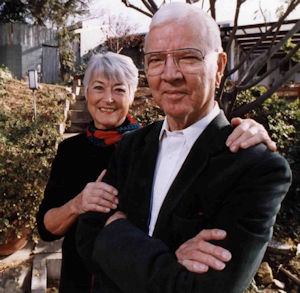
He was once again on my mind as I bounded down the dusty Baja dirt road from Santo Tomás to La Bocana.
“He” was Jack Smith (1916-1996) and I idolized the guy. Besides his largesse as a journalist, he was a fellow southern Californian and also a veteran. Although I served in peacetime, Smith survived the bloody WWII landing at Iwo Jima.
His columns in the west’s largest newspaper, the Los Angeles Times, were so popular for over 37 years they were syndicated to over 600 newspapers. He wrote about a neighborhood in which we both lived, the Mt. Washington area of Los Angeles. And, more importantly, he wrote about Baja.
In 1973 I had invited the crusty old curmudgeon (as he was referred to me) to be one of the judges of the former Miss United Crusade Contest of which I was the Los Angeles Chairman. While I found him to be opinionated and stubborn, I was delighted by his wry sense of humor. That day we also shared some of our Baja experiences.
In 1970, Smith and his wife Denny had built a 2 bedroom, one bath home on a Baja bluff south of Ensenada at La Bocana, the mouth of the Santo Tomás River. His columns featuring stories on the travails of the construction delighted his many readers and resulted in the classic 1974 book, God and Mr. Gomez.
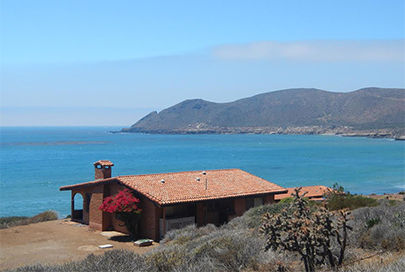
His earlier Times columns where he introduced Mr. Romulo Gomez and the construction project helped convince me to make my first Baja purchase in 1971. I felt a little kinship to Smith in my original little trailer and told him so. We shared Baja fever.
I had moved to Orange County and never saw Jack Smith again, but it wasn’t for lack of some half-hearted attempts. On a spontaneous whim in 1976 a buddy and I had driven down the 17 mile dirt road of the Santo Tomás Valley to La Bocana. The Smith house was pointed out by a neighbor but they were not in residence that week. We enjoyed chatting with the neighbor, Hal Schmidt, a banker Smith had mentioned in his book.
The homes sit on a chaparral-covered bluff facing the frothing sea. Kelp beds undulate with the constantly pulsing tides just offshore. You can see the small fishing village of Puerto Santo Tomás, a couple miles north. It’s a beautiful, wild, mesmerizing and captivating location.
We met Mr. Gomez
On another excursion in 1983 several of us, including my wife and another couple, drove down to La Bocana again. We enjoyed the scenery on the narrow road along the valley floor, past small farms and ranches, stopping to picnic and splash our feet in the several stream-bed pools of the not-so-mighty river.
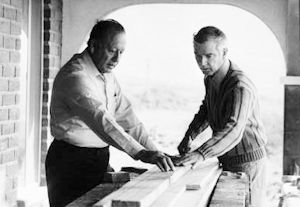
Again the Smiths were not there, but we met Mr. Gomez at his house and took photos with the local builder/grocer/character who had been immortalized by Jack Smith. We found him more of a delight than Jack’s enigma, but then again he was not building a house for us.
I had been along the highway through Santo Tomás numerous times since, but never down to La Bocana. I knew the Smiths had sold their house in 1990 and that Jack had passed away some years later. I’d heard that the house was owned by two Santa Barbara couples and then sold again in 1997.
But the little settlement down at the end of the Santo Tomás Valley was still a draw for me, and in May 2015 I decided to take a solitary day trip from my Cantamar, B.C. house. I wondered what might have changed since Jack romanticized the area.
For starters the urban sprawl of Ensenada now extends almost all the way to the once-small village of Maneadero. And it’s no longer all Mexican tiendas or loncherias you drive past. Oh no. Today, it’s Walmart, Office Depot, Costco, McDonald’s and other Yankee icons that extend “vanilla” merchandising to foreign countries. While an economic boon for the locals, this type of Americana elsewhere still seems like pollution to me. I don’t think Jack would have felt that he was in his beloved Mexico.
And former sleepy Maneadero, which in his day had one stop sign for the La Bufadora cutoff, now has over a dozen, and a few traffic lights to boot. And most of the road south to Santo Tomás has been widened; even the old “s” curve dropping you into the Santo Tomás Valley has been bypassed.
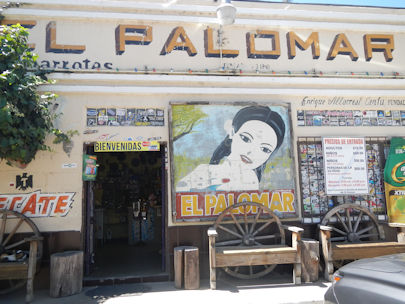
The El Palomar of Santo Tomás
Mr. Smith would have been pleased to note that Santo Tomás is much the same as it was, even to the old El Palomar Store/Restaurant/Motel, hardly changed since the Smiths spent a night in the motel upstairs. In my book Baja Legends, I mention Jack Smith’s comments about his El Palomar experience. He also introduced the proprietors, the Villareal family, who are still there. Over the years the Villareals have occasionally sold my Baja books and Emma Villareal was most gracious on this current visit. I enjoyed lunch there before I headed off the pavement.
The valley was lush with olive groves, and with fat grapes on bright green vines, but the huge new winery by the cutoff from the highway would have seemed alien to Jack. I turned down the dirt road toward the ocean, through a little community amid the broad valley boasting corn, chiles, and melons along with the grapes.
I was surprised and a little confused when the road left the valley floor to climb up and hug the hillside. It seems that heavy rains and flooding five years ago wiped out much of the valley floor taking the old road with it. This new all-weather, well-graded dirt road is mostly cut into the hillside. Jack may have preferred it to fording the stream on several occasions and opening and closing gates when the old road went through private property.
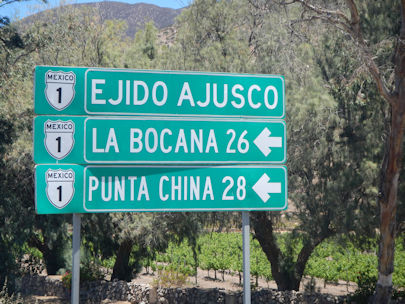
As I neared the ocean the valley opened out and fields of chard and calabasa (pumpkin) were being worked by locals. A road to the small community of Punta China took off to the south just before the intermittent river opened to a broad and beautiful reed-lined lagoon – la bocana (the little mouth). Sandbars enclose the lagoon from the pounding ocean.
Next to some broad and shady casuarina (pine-like) trees on the lip of the lagoon is Gomez’s La Bocana store, now sadly shuttered. The house where I had met Gomez looked different too, the vestiges of a happy family life obviously gone. Romulo Gomez was gone too, succumbing to cancer in 1994 at age 83. His wife Delia preceded him in death, and they left two sons, Sergio and Pepe; a daughter, Marisa, and several grandchildren.
I realized with sadness that it was all a chapter of the past. Things change, just like the valley’s Misiόn Santo Tomás. Founded back in 1791, high water forced the mission to change valley locations three different times. A Dominican padre said the last Mass in the final adobe mission in 1849. The diminishing number of Indians in the area and the government’s interest in secularization sealed its doom. Santo Tomás became a military base and territory capital.
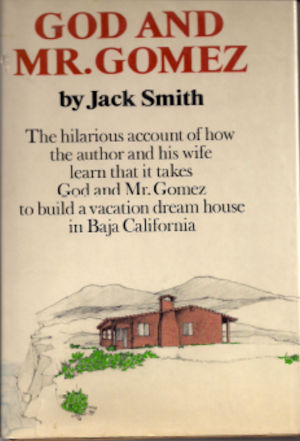
Things usually change slowly in Baja, often reflecting the pace of its inhabitants. But they change. The Indians had their era, the padres, theirs, and the soldiers, theirs. The Smiths had their getaway home for two decades and now they too are gone.
Jack Smith’s columns energized many thousands of followers. He went on to author a total 10 books, bringing many of his columns to life for an even broader readership.
A lot of Baja buffs were inspired by the writings of Jack Smith, including Rosarito area resident and Baja Nomad board member Gypsy Jan, who once commented, “The stories in his LA Times column and the resulting book about Baja helped create and nurture my love affair with this strange and mystical place.”
Smith’s last column appeared on December 25, 1995. He died on January 9, 1996, aged 79. His papers were donated to the Huntington Library in 2005 and he and Denny established the Jack and Denny Smith Memorial Fund for Literacy.
While Jack Smith is gone, his legacy lives on.
About Greg
Greg Niemann is the author of Baja Fever, Baja Legends, Palm Springs Legends, Las Vegas Legends, and Big Brown: The Untold Story of UPS. Visit Greg's website.

Easy to renew, offers the best coverage for me to feel comfortable while driving in Mexico.

Great service, quick response time.

Very knowledgeable and helpful.